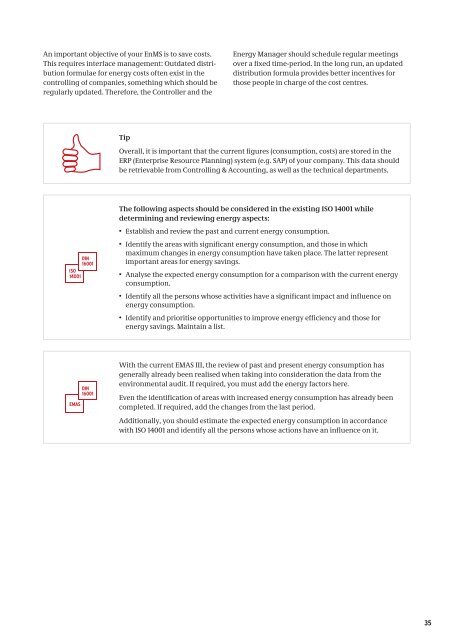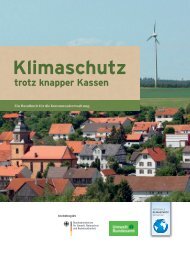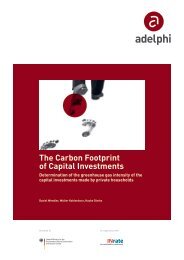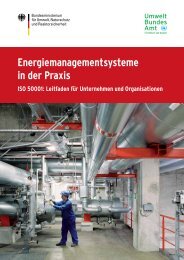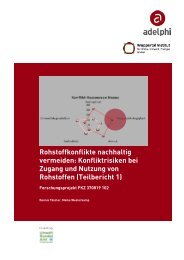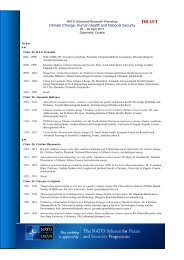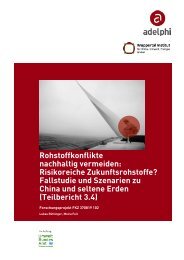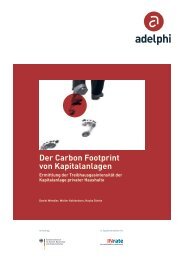DIN EN 16001: Energy Management Systems in Practice - adelphi
DIN EN 16001: Energy Management Systems in Practice - adelphi
DIN EN 16001: Energy Management Systems in Practice - adelphi
You also want an ePaper? Increase the reach of your titles
YUMPU automatically turns print PDFs into web optimized ePapers that Google loves.
An important objective of your EnMS is to save costs.<br />
This requires <strong>in</strong>terface management: Outdated distribution<br />
formulae for energy costs often exist <strong>in</strong> the<br />
controll<strong>in</strong>g of companies, someth<strong>in</strong>g which should be<br />
regularly updated. Therefore, the Controller and the<br />
Tip<br />
<strong>Energy</strong> Manager should schedule regular meet<strong>in</strong>gs<br />
over a fixed time-period. In the long run, an updated<br />
distribution formula provides better <strong>in</strong>centives for<br />
those people <strong>in</strong> charge of the cost centres.<br />
Overall, it is important that the current figures (consumption, costs) are stored <strong>in</strong> the<br />
ERP (Enterprise Resource Plann<strong>in</strong>g) system (e.g. SAP) of your company. This data should<br />
be retrievable from Controll<strong>in</strong>g & Account<strong>in</strong>g, as well as the technical departments.<br />
The follow<strong>in</strong>g aspects should be considered <strong>in</strong> the exist<strong>in</strong>g ISO 14001 while<br />
determ<strong>in</strong><strong>in</strong>g and review<strong>in</strong>g energy aspects:<br />
•<br />
Establish and review the past and current energy consumption.<br />
• Identify the areas with significant energy consumption, and those <strong>in</strong> which<br />
maximum changes <strong>in</strong> energy consumption have taken place. The latter represent<br />
important areas for energy sav<strong>in</strong>gs.<br />
• Analyse the expected energy consumption for a comparison with the current energy<br />
consumption.<br />
• Identify all the persons whose activities have a significant impact and <strong>in</strong>fluence on<br />
energy consumption.<br />
• Identify and prioritise opportunities to improve energy efficiency and those for<br />
energy sav<strong>in</strong>gs. Ma<strong>in</strong>ta<strong>in</strong> a list.<br />
With the current EMAS III, the review of past and present energy consumption has<br />
generally already been realised when tak<strong>in</strong>g <strong>in</strong>to consideration the data from the<br />
environmental audit. If required, you must add the energy factors here.<br />
Even the identification of areas with <strong>in</strong>creased energy consumption has already been<br />
completed. If required, add the changes from the last period.<br />
Additionally, you should estimate the expected energy consumption <strong>in</strong> accordance<br />
with ISO 14001 and identify all the persons whose actions have an <strong>in</strong>fluence on it.<br />
35


